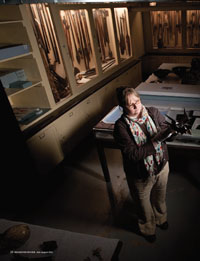Features
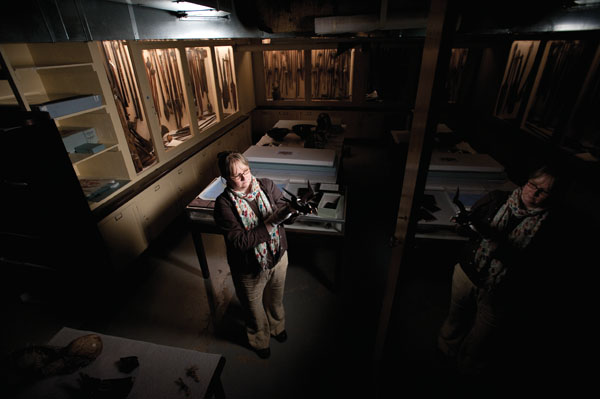 PIECE WORK: Kathryn Leacock, curator of collections at the Buffalo Museum of Science, examines a carved frigatebird from
the P. G. T. Black Collection, a 6,200-piece trove purchased by the museum in 1938. (Photo: Adam Fenster)
PIECE WORK: Kathryn Leacock, curator of collections at the Buffalo Museum of Science, examines a carved frigatebird from
the P. G. T. Black Collection, a 6,200-piece trove purchased by the museum in 1938. (Photo: Adam Fenster)Robert Foster travels across the globe to do field research in Papua New Guinea. But one day a few years ago, following up on a footnote in a book, the professor of anthropology and of visual and cultural studies drove less than an hour west of Rochester to Buffalo—and found there one of the largest and oldest collections of Pacific Islands artifacts anywhere in the world.
That 2006 discovery took place in the halls of the Buffalo Museum of Science. Although the museum had a couple dozen objects on display, when staff took Foster to the museum’s storeroom, he discovered thousands of pieces.
“I was stunned,” Foster says. “It was off the map. Buffalo’s not a place you’d expect Pacific Islands objects to be.”
The P. G. T. Black Collection—safely preserved at the museum for the last seven decades—contains some 6,200 objects from remote villages and colonial outposts across Melanesia, everything from stone axes and toys to fishing tools and spears. Although individual items had been displayed, a catalog of the collection had never been published—and the trove of cultural treasures had remained virtually unknown among scholars.
“The collection provides a window into the early encounters between Pacific Islanders and traders, missionaries, and collectors,” says Foster, an expert on the effects of globalization. “These objects reveal islanders’ innovative response to the influx of Europeans and new technologies around the turn of the 20th century.”
“It’s an unusual collection in that it emphasizes everyday objects more than exotic ritual objects,” Foster says. “I’ve speculated that in some ways it’s a ‘shadow’ collection, representing objects that were being replaced at the time by what Europeans were bringing in.”
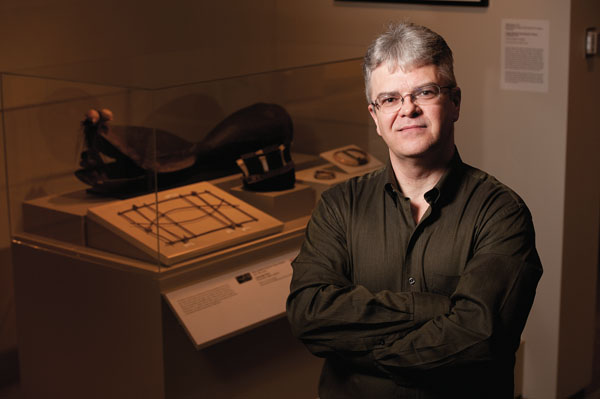 PROFESSORS & COLLECTORS: Robert Foster (above) visits the Memorial Art Gallery, where items are on loan from the Black collection,
named for the Australian inspector for a shipping firm (right) who collected the items between 1886 and 1916. (Photo: Adam Fenster)
PROFESSORS & COLLECTORS: Robert Foster (above) visits the Memorial Art Gallery, where items are on loan from the Black collection,
named for the Australian inspector for a shipping firm (right) who collected the items between 1886 and 1916. (Photo: Adam Fenster)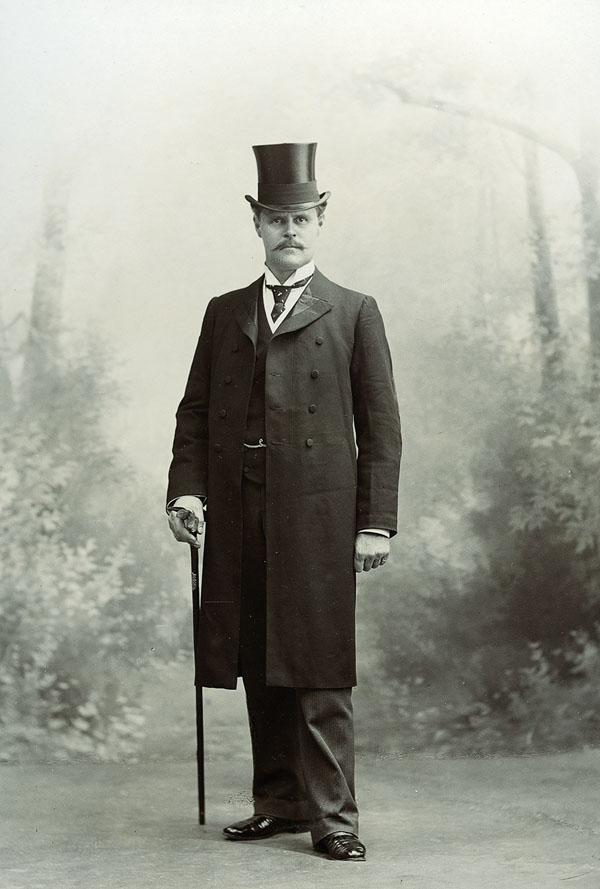 (Photo: Buffalo Museum of Science)
(Photo: Buffalo Museum of Science)P. G. T. Black, the collector, was a branch inspector for Burns, Philp & Co., a trading and shipping firm based in Sydney, Australia. He acquired the objects—pieces used by Pacific Islanders at the time—between 1886 and 1916, and in 1938 the Buffalo Museum of Science bought, sight unseen, the 40 crates they filled.
There are some structural reasons for the collection’s low profile, Foster says. Anthropology as a discipline was, until the 1920s or ’30s, much more institutionally associated with museums than it is today, and the ties that did remain tended to concern archaeology. The Buffalo Museum of Science is independent of all of the area’s universities.
Lacking proper documentation, the Black collection remained relatively unknown even among Pacific studies specialists. The problem, Foster explains, is that without accurate records of where and under what circumstances objects were acquired, scholars have lacked crucial context for the objects.
But a lucky break and some timely advocacy by museum staff and Foster have solved the mystery. After tracking down Black’s grandson in California during the mid-1990s, a former museum curator discovered that the family owned three trunks of papers, including material from the period when Black was collecting. In 2010, following inquiries from Foster, Black’s great-grandson donated the original diaries to the museum. From these documents—itineraries, really, says Foster—and other material in the Australian archives, Foster has been able to piece together some of the missing background on the collection.
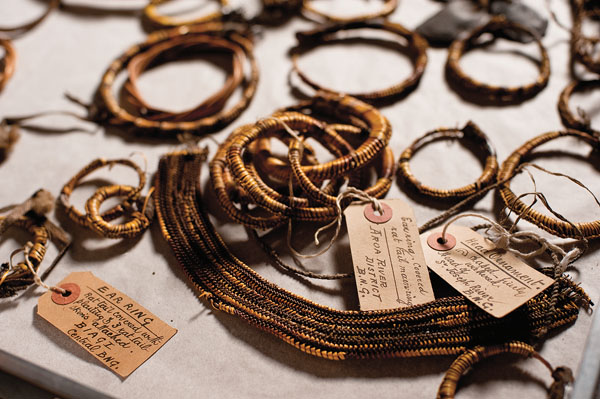 DOCUMENTED COLLECTION: A museum drawer holds examples of earrings and other ornaments from Central Province, Papua New Guinea (above), part of a collection that also includes Black’s meticulously kept diaries (below). (Photo: Adam Fenster)
DOCUMENTED COLLECTION: A museum drawer holds examples of earrings and other ornaments from Central Province, Papua New Guinea (above), part of a collection that also includes Black’s meticulously kept diaries (below). (Photo: Adam Fenster)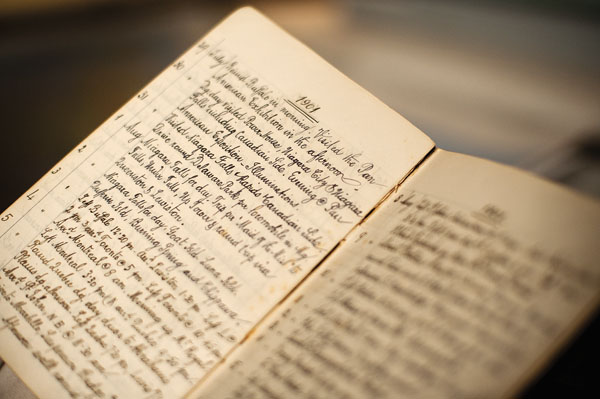 (Photo: Adam Fenster)
(Photo: Adam Fenster)The National Endowment for the Humanities and the American Council of Learned Societies have both awarded Foster fellowships to support his project of sharing the riches of the collection with a wider audience. His scholarly sleuthing will culminate in a book, an online catalog, and a museum exhibit, Journeys into Papua, that opens September 17 in celebration of the museum’s 150th anniversary.
The collaboration is a “match made in heaven,” says Kathryn Leacock, curator of collections at the museum. “He provides the research, we have the collection.”
Foster anticipates that the insights culled from the collection will eventually come full circle. He’s working with senior researchers at the Australian Museum, the National Gallery of Australia, and the Australian National University on ways to incorporate the objects from the Black collection into regional projects. Such initiatives, he says, will help make the artifacts accessible to the communities from which they originated and provide a rich set of resources for constructing local histories.
“It’s amazing when you think of these objects that were created in New Guinea in the 1890s and then went to Australia, and then to Buffalo and then—for those that were part of other exhibitions—New York or San Francisco or Washington, D.C.,” says Foster.
“They’re not inert. They have what I call ‘social lives’—and new meanings continually get attached to them.”
Additional reporting by Kathleen McGarvey
